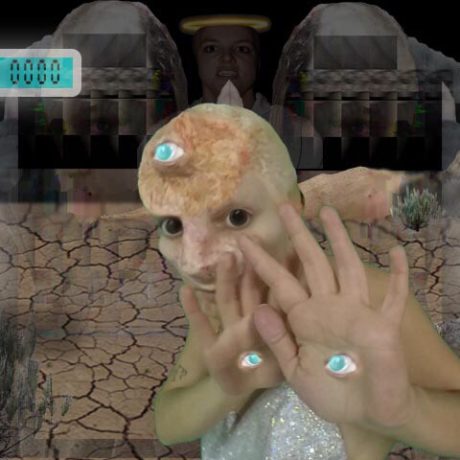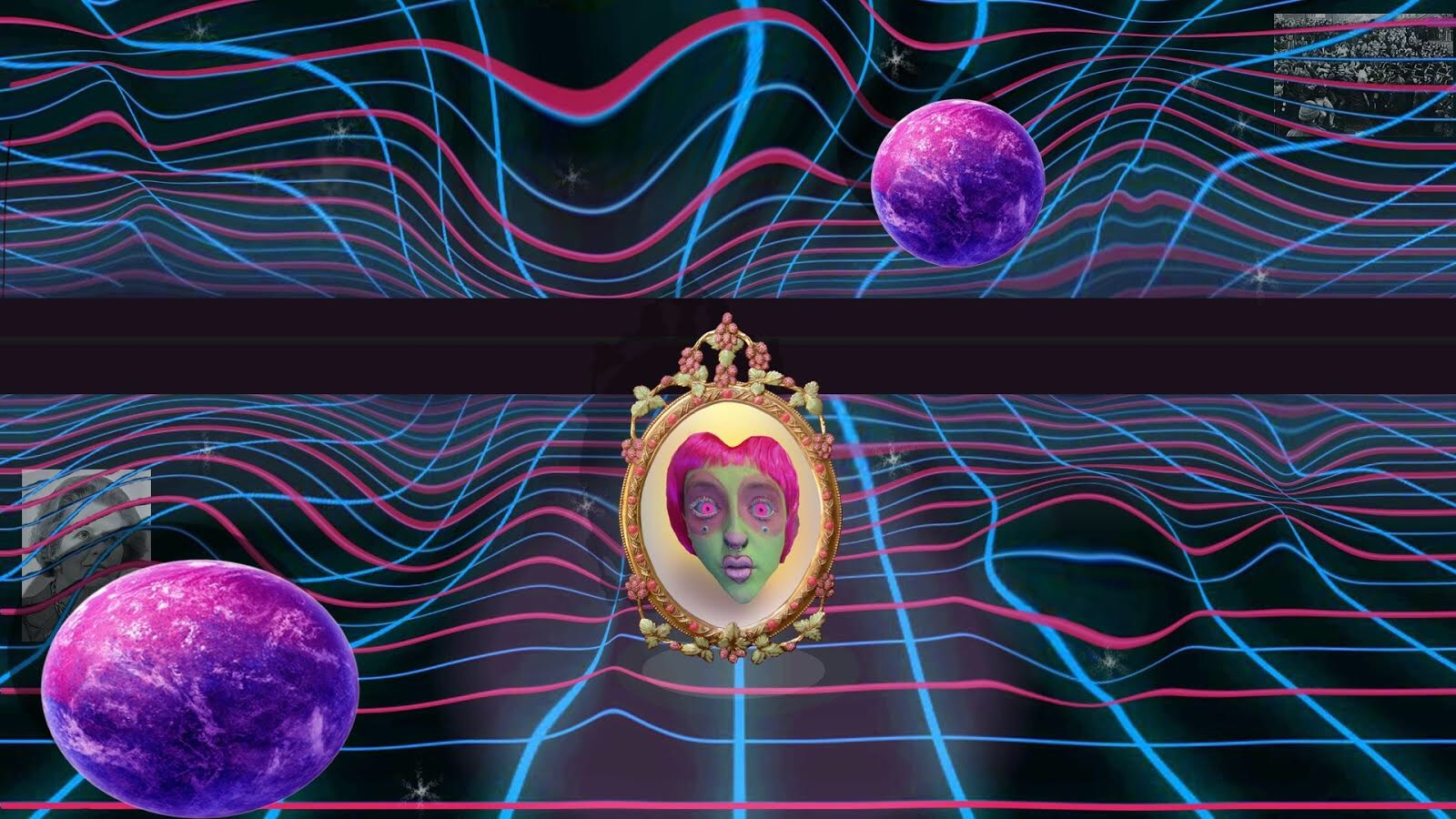 Walking into Psycho Sensual Time Travelling Television Drama, Multiplicity’s solo exhibition at the Old Truman Brewery in east London, visitors are greeted with a scape of video game sound effects that jump out on top of an eerie extra-terrestrial hum. Armies of their self-performed characters waltz around the luscious and kitschy fictional location of “Doll Wood”, jeer and sip wine sporting a very DIY facelift, or wander cautiously through questionably rendered outer-space planets. Popping with early 2000s video game and internet graphics (the type you may have had on your Myspace profile), a dose of the lo-fi aesthetic of Ryan Trecartin and sugariness of Rachel Maclean, their work intends to open up a dialogue about the multiple global systems of oppression that work to keep capitalism afloat.
Walking into Psycho Sensual Time Travelling Television Drama, Multiplicity’s solo exhibition at the Old Truman Brewery in east London, visitors are greeted with a scape of video game sound effects that jump out on top of an eerie extra-terrestrial hum. Armies of their self-performed characters waltz around the luscious and kitschy fictional location of “Doll Wood”, jeer and sip wine sporting a very DIY facelift, or wander cautiously through questionably rendered outer-space planets. Popping with early 2000s video game and internet graphics (the type you may have had on your Myspace profile), a dose of the lo-fi aesthetic of Ryan Trecartin and sugariness of Rachel Maclean, their work intends to open up a dialogue about the multiple global systems of oppression that work to keep capitalism afloat.
Individually, Thomas’s videos are more involved with images of womanhood, working class identity and celebrity culture, whilst Kudakwashe turns to Afrofuturism in a scrambling of racial identity and hyper-masculinity. Yet, just as in this world, all of these ideas weave themselves between both artist’s videos, not least through visual links dropped in throughout. Mike Kelley said “the only social function of art is to fuck things up”
, and sure enough there are no solutions here. What there is is an energy and excitement that feels like it’s only just getting started.
I spoke with the artists in the run-up to their opening.
So can you talk me through the narrative of Psycho Sensual Time Travelling Television Drama?
Clive Kudakwashe: Our work is a blend of different narratives and different subject matters. We look at race and class systems, and I’m mainly looking at Afrofuturist artists.
Jess Thomas: And about gender…
CK: We project these ideas through different alternate reality versions of ourselves. We’re the protagonists in each of our videos. I’m also exploring my own childhood and questions of African mythology. I’m from Zimbabwe, so I include religious themes from Zimbabwean culture and mythology and science fiction—testing the boundaries of where these can go.
JT: I’m especially fascinated by how women are portrayed in society, how we become obsessed with people through media outlets, and what that does to us society-wise.
CK: Most of the world has access to the internet or digital devices and it’s interesting having that ability and that resource…
JT: To share difficult ideas, but also have the possibility to spread hateful ones, and to become egotistical.
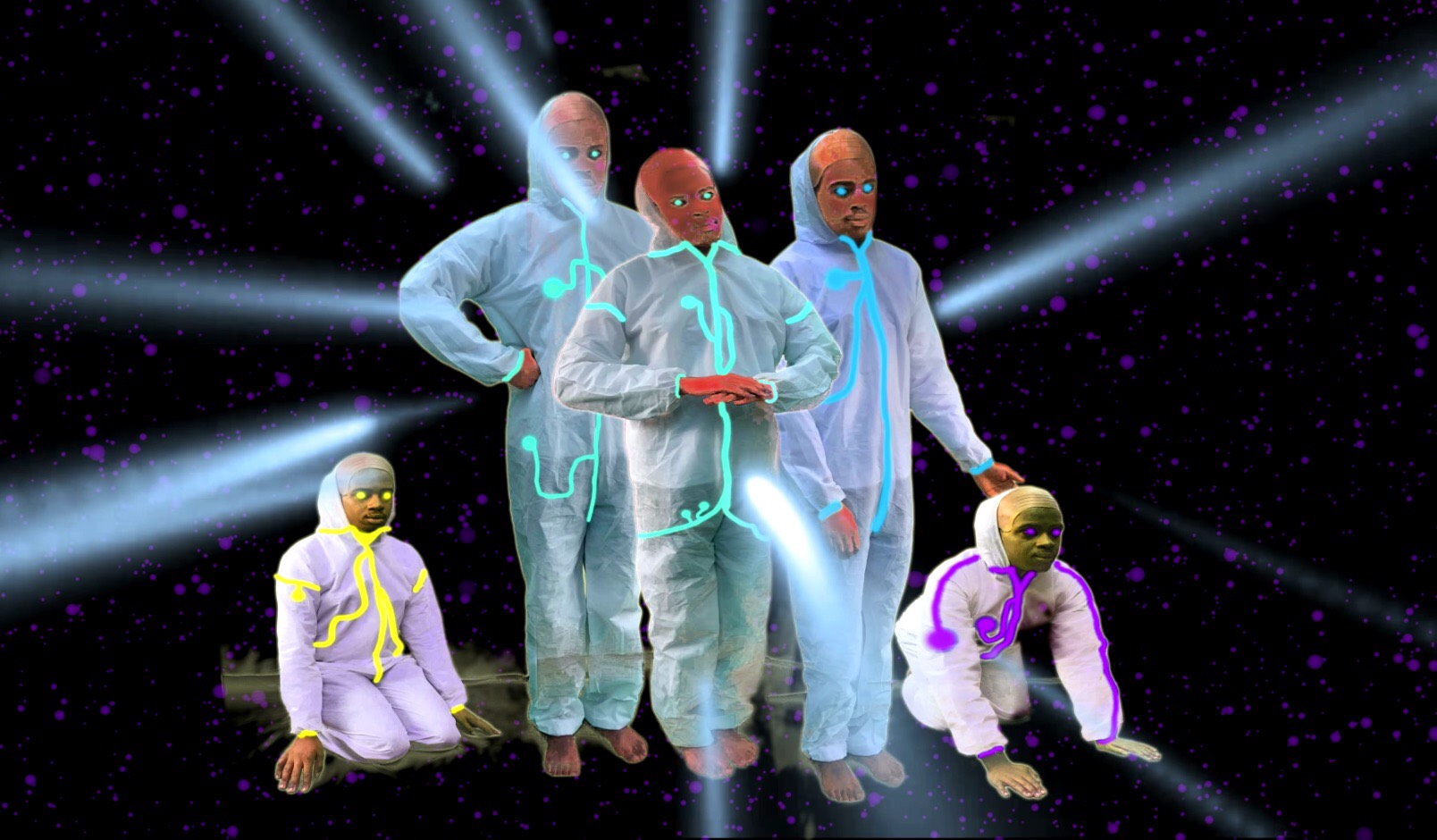
Your lo-fi aesthetic—where did you get the inspiration from for that?
CK: They have that aesthetic for a reason, for it to feel that all of these issues, all of these topics, these subject matters are relevant for everybody to talk about. They’re something that feels like everybody could do, aren’t they? Also a lot of our favourite artists, like Ryan Trecartin…
JT: And Rachel Maclean (although she’s super high-quality) have this kitschy, weird sickliness that I really like.
CK: And RuPaul’s Drag Race. We take a huge input from drag culture: the campiness, the over the top…
“They have that aesthetic for a reason, for it to feel that all of these issues, all of these topics, these subject matters are relevant for everybody to talk about.”
Clive, you were talking about Afrofuturism… Is there any particular literature either of you are inspired by?
CK: I was a very nerdy kid. I was quite feminine, into comic books. One of the earliest accounts I can think of, of seeing Afrofuturism, in my own opinion: the TV show, The Magic School Bus. It’s this really old show about a teacher who would take these kids on an adventure, and they’d utilize this magic bus that would transform. There were two black kids in that TV show, and that was the first time I’d seen individuals that look like myself, but also that dived into magic, and the non-human and unrealistic. Although it was a TV show, it was interesting having my own voice or my own face on TV in a space where it wasn’t stereotyping, it was adventurous and it was interesting.
JT: A main one for me is The Ragged-Trousered Philanthropists. That book is massively influential on my opinions of life. We direct the blame in society on anyone and everyone, like people are too rich, people are too poor, people are too gay or black. It’s a weird game that we play to distract ourselves…
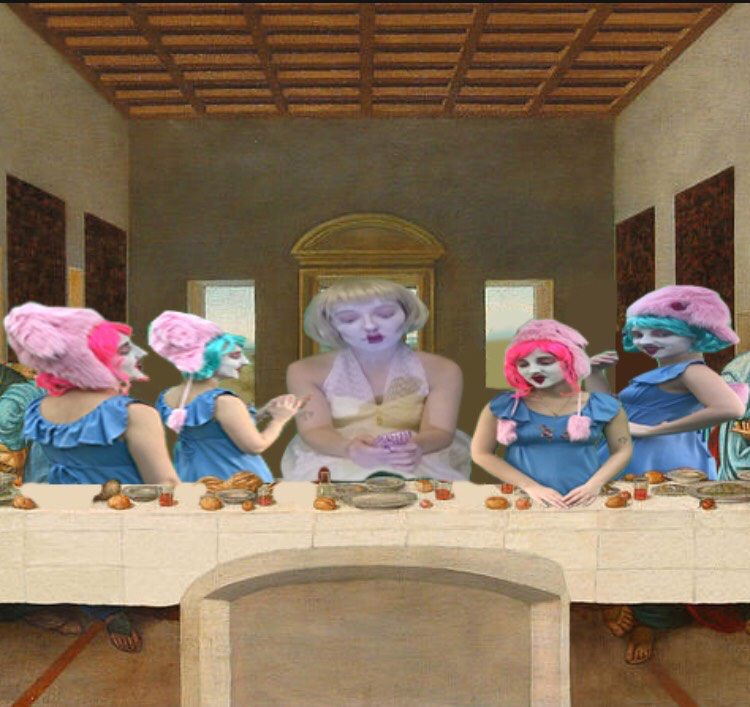
Are your films set in the future or in an alternate reality?
JT: Alternate reality.
CK: That’s where our name comes from, it’s set in multiple alternate universes, but also the future: what could be, if we decided that the earth was to be ruled by a bunch of me’s and us’s.
Do you start with writing a script or a story, or with a kind of aesthetic that you want to go for?
JT: A mix of both. We tend to have an idea of where we want a film to go or what we want something to be like, and that might have come from seeing something that inspired us aesthetically. And we do just play dress up for no reason.
CK: There’s been a lot of scenes from our previous video that started as “Oh let’s randomly film something” and then they begin to go somewhere, to build a narrative of their own. Then we do sessions of storyboarding.
JT: We don’t really write scripts, more just strange sounds.
CK: It’s a very fluid way of working, we bounce off each other.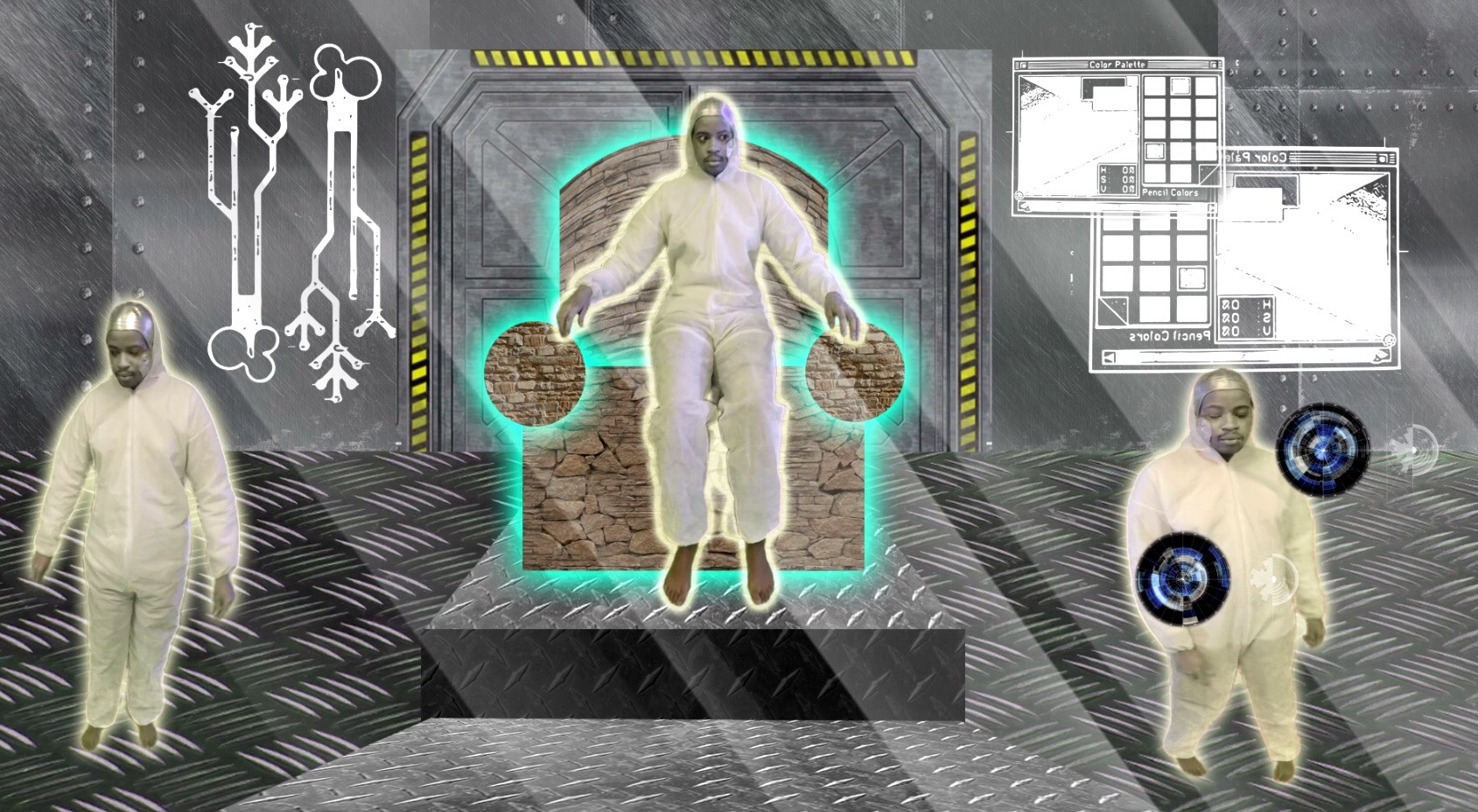
How did you meet?
CK: At uni. We lived with each other for two years.
JT: That’s when the magic happened!
CK: I honestly don’t even know how we decided to do this collaboration. I think it just genuinely happened naturally, because we do have very similar interests, and we find the same visual aesthetics interesting. And we love acting, and following our delusions, so that’s probably where it manifested.
JT: Encouraging each other too much maybe.
“The videos aren’t very optimistic about the future, but I think I’m optimistic about the future. Poking fun at things the doom and gloom can make things seem more manageable.”
How far are you aiming to make something that’s funny and how far are you aiming to make something that addresses particular political issues?
CK: Always in my work I believe there’s a strong importance in showing quite explicitly what I’m trying to get across.
JT: Yes, although it is done in a funny way, it is always serious in its message. It’s just, we try and find the humour in the things, and then pull that apart and expand that.
CK: Sometimes the humour just comes from happy accidents. Like sometimes something will just look fun. Because we don’t have a production team to make things look amazing, we just have ourselves, and the two or three resources we have.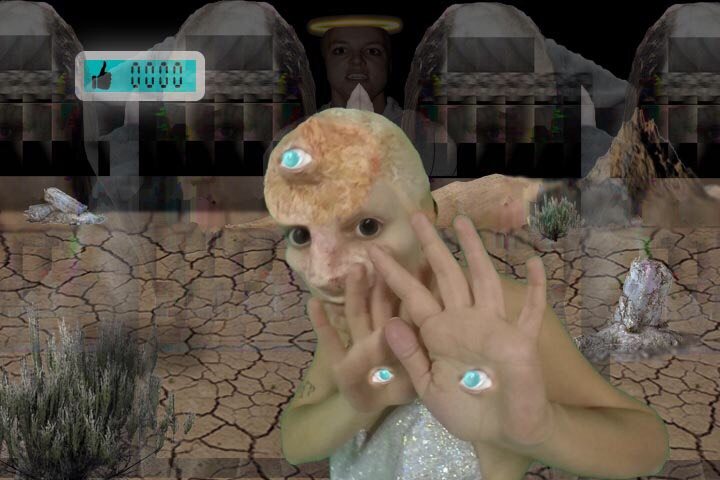
Are your videos optimistic about the future?
JT: The videos aren’t very optimistic about the future, but I think I’m optimistic about the future. Poking fun at things the doom and gloom can make things seem more manageable. We’re all focused so hard on the idea the world’s going to end.
CK: Currently, I think the people of the world share this, I don’t know if I can call it seriousness, but not wanting to necessarily address issues as best as they could.
JT: I think people are too close to it, and it’s difficult to be positive or critical and actually focus on an issue when it’s very personal to you. Hopefully people can look at our videos as some weird objective mess, and find “Okay, maybe we are being too serious about this” or “Okay, these issues are real but how can we address them better?”
CK: I firmly believe that just by getting someone to talk about something, in any way, even just by having a small joke, is really important.
JT: What I like about video work is it’s a format that most people who aren’t necessarily in the art world feel comfortable commenting on. It’s a medium that they can understand.
I agree. Also, you have to give a lot of time to sit in a gallery and watch a video, but if you do it can give so much to you. It’s more of an intense relationship, more than with any other medium I think.
CK: It does definitely force some kind of conversation between the watcher and the video, which can only strengthen what we’re trying to do.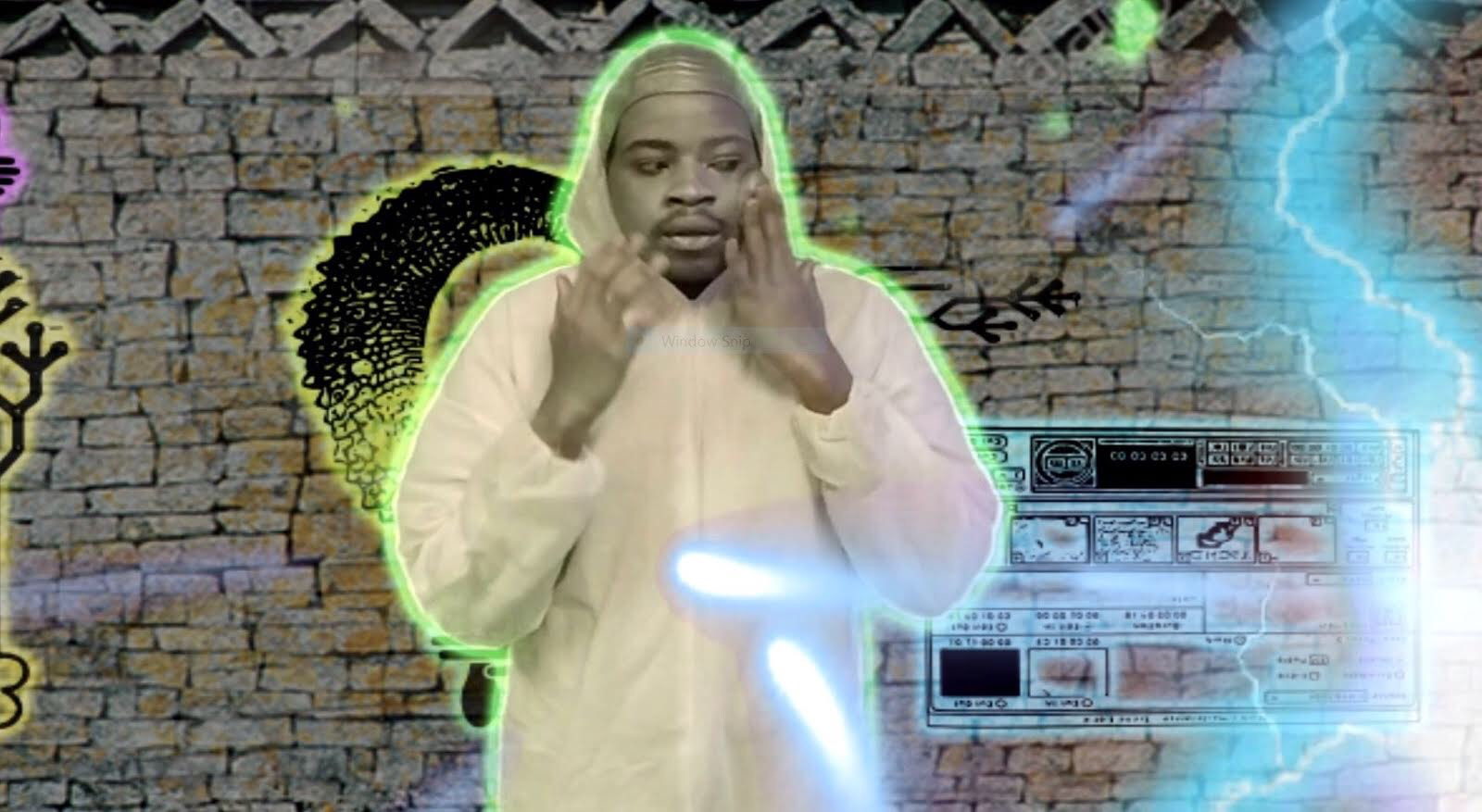
What have you got planned for the year?
CK: We’ve got some plans, in their very early stages… now that we know our own style and we’re comfortable with what we’re doing, we’re ready to go solo and go out into the world to do some residencies.
JT: Fully grown artist babies!
Free Range Awards: Solo Exhibitions
Until 4 February at The Old Truman Brewery, London.
VISIT WEBSITE
